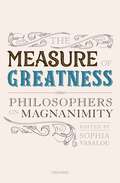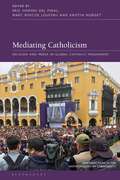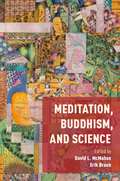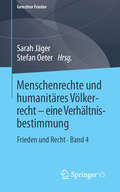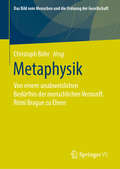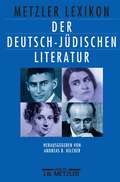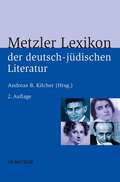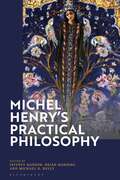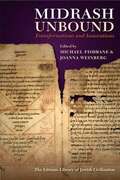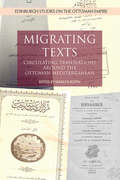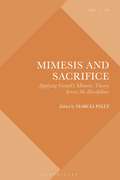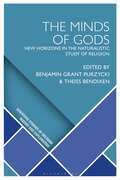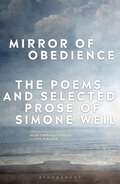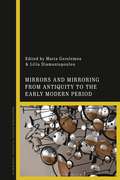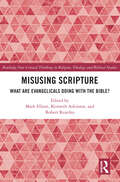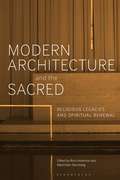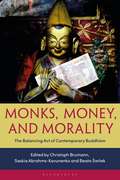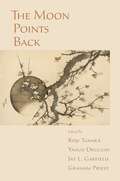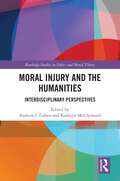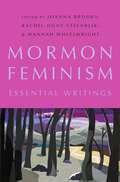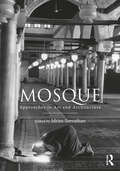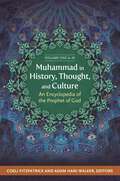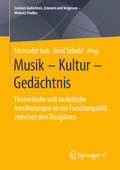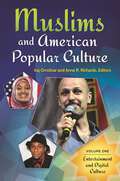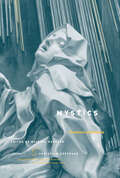- Table View
- List View
The Measure of Greatness: Philosophers on Magnanimity (Mind Association Occasional Series)
Magnanimity is a virtue that has led many lives. Foregrounded early on by Plato as a philosophical virtue par excellence, it became one of the crown jewels in Aristotle's account of human excellence and was accorded equally salient place by other ancient thinkers. It is one of the most distinctive elements of the ancient tradition to filter into the medieval Islamic and Christian worlds. It sparked important intellectual engagements and went on to carve deep tracks through several of the later philosophies to inherit from this tradition. Under changing names and reworked forms, it would continue to breathe in the thought of Descartes and Hume, Kant, and Nietzsche. Its many lives have been joined by important continuities, yet they have also been fragmented by discontinuities — discontinuities reflecting larger shifts in ethical perspectives and competing answers to questions about the nature of the good life, the moral nature of human beings, and their relationship to the social and natural world they inhabit. They have also been punctuated by moments of intense controversy in which the vision of human greatness has itself been called into doubt. The aim of this volume is to provide an insight into the complex trajectory of a virtue whose glitter has at times been as dazzling as it has been divisive. By exploring the many lives it has lived, we will be in a better position to evaluate whether this is a virtue we still want to make central to our own ethical lives, and why.
Mediating Catholicism: Religion and Media in Global Catholic Imaginaries (New Directions in the Anthropology of Christianity)
This book focuses on the ethnographic study of Catholicism and media. Chapters demonstrate how people engage with the Catholic media-scape, and analyse the social, cultural, and political processes that underlie Catholic media and mediatization. Case studies examine Catholic practices in North America, Western and Eastern Europe, Latin America, South-East Asia, and Africa, providing a truly comparative, de-centred representation of global Catholicism. Illustrating the vibrancy and heterogeneity of Catholicism world-wide, the book also examines how media work to sustain larger global Catholic imaginaries.
Meditation, Buddhism, and Science
The scientific study of Buddhist forms of meditation has surged in recent years, capturing the popular imagination and reshaping conceptions of what meditation is and what it can do. For perhaps the first time in history, meditation has shifted from Buddhist monasteries and practice centers to some of the most prominent and powerful modern institutions in the world, as well as non-institutional settings. As their contexts change, so do the practices-sometimes drastically. New ways of thinking about meditation are emerging as it moves toward more secular settings, ways that profoundly affect millions of lives all over the world. To understand these changes and their effects, the essays in this volume explore the unaddressed complexities in the interrelations between Buddhist history and thought and the scientific study of meditation. The contributors bring philosophical, cultural, historical, and ethnographic perspectives to bear, considering such issues as the philosophical presuppositions behind practice, the secularization of meditation, the values and goods assumed in clinical approaches, and the sorts of subjects that take shape under the influence of these transformed and transformative practices-all the more powerful for being so often formulated with the authority of scientific discourse.
Menschenrechte und humanitäres Völkerrecht - eine Verhältnisbestimmung: Frieden und Recht • Band 4 (Gerechter Frieden)
Die Menschenrechte und das humanitäre Völkerrecht haben eines gemeinsam: das Ziel des Schutzes und der Absicherung der Menschen. Das Verhältnis zwischen ihnen ist dabei nach wie vor umstritten und nicht abschließend geklärt. Hierfür gibt es vielfältige Gründe. Sie reichen von der geschichtlichen Entwicklung beider Rechtsgebiete über rechtsdogmatisch voneinander abweichende Ansichten bis hin zu Fragen des Verhältnisses im engeren Sinne. Die Autorinnen und Autoren dieses Bandes nähern sich aus verschiedenen disziplinären Perspektiven der Zuordnung der beiden Rechtskorpora und ihrer jeweiligen Geltungsbereiche an.
Metaphysik: Von einem unabweislichen Bedürfnis der menschlichen Vernunft. Rémi Brague zu Ehren (Das Bild vom Menschen und die Ordnung der Gesellschaft)
Ein Leben lang leidet der Mensch an der nie zu überwindenden Endlichkeit seiner Vernunft, die ihn heftig mit Fragen bedrängt, zu deren Beantwortung sie selbst gar nicht in der Lage ist. Im Blick auf den Versuch, dieses Paradoxon aufzulösen, dass nämlich einerseits das metaphysische Bedürfnis der Vernunft zwar von dieser nicht aus eigener Kraft zufriedengestellt werden kann, andererseits aber diese Einsicht keineswegs ihr bohrendes Fragen zum Schweigen bringt, wird die Verführung nachvollziehbar, das Kind mit dem Bade auszuschütten und der Vernunft rundweg und grundsätzlich eine tragfähige lebens- und handlungsleitende Kraft abzusprechen. Große Teile der Postmoderne sind von diesem tiefen Misstrauen, das den Abschied von aller Vernunft zu rechtfertigen scheint, geprägt. Die Alternative zu ihrer Verabschiedung im Aufweis der Möglichkeit – ja Notwendigkeit – von Metaphysik auch und gerade angesichts einer stets in ihrer Endlichkeit gefangenen Vernunft wird in diesem Buch gezeichnet.
Metzler Lexikon der deutsch-jüdischen Literatur: Jüdische Autorinnen und Autoren deutscher Sprache von der Aufklärung bis zur Gegenwart
Von Moses Mendelssohn bis Edgar Hilsenrath, von Henriette Herz bis Ruth Klüger. In 280 Porträts stellt das Lexikon jüdische Autorinnen und Autoren deutscher Sprache von der Aufklärung bis in die jüngste Gegenwart vor. Das interkulturelle Feld zwischen der deutschen Literatur und der jüdischen Kultur der Moderne stellt sich auf neue Weise dar und wurde in dieser Ausführlichkeit noch nie beschrieben.
Metzler Lexikon der deutsch-jüdischen Literatur: Jüdische Autorinnen und Autoren deutscher Sprache von der Aufklärung bis zur Gegenwart
Von Moses Mendelssohn bis Doron Rabinovici, von Henriette Herz bis Barbara Honigmann. Das Lexikon stellt 310 jüdische Autorinnen und Autoren deutscher Sprache vor von der Aufklärung bis in die Gegenwart. Bei der Einordnung der Autoren in die deutsch-jüdische Literatur gilt das Augenmerk der jeweiligen Standortbestimmung des eigenen Schreibens.
Michel Henry’s Practical Philosophy
Providing theoretical and applied analyses of Michel Henry's practical philosophy in light of his guiding idea of Life, this is the first sustained exploration of Henry's practical thought in anglophone literature, reaffirming his centrality to contemporary continental thought. This book ranges from the tension between his methodological insistence on life as non-intentional and worldly activities to Henry's engagement with the practical philosophy of intellectuals such as Marx, Freud, and Kandisky to topics of application such as labor, abstract art, education, political liberalism, and spiritual life.An international team of leading Henry scholars examine a vital dimension of Henry's thinking that has remained under-explored for too long.
Midrash Unbound: Transformations and Innovations (The Littman Library of Jewish Civilization)
Midrash is arguably the most ancient genre of Jewish literature, forming a voluminous body of scriptural exegesis over the course of centuries. There is hardly anything in the ancient rabbinic universe that was not taught through this medium. The diversity and development of that creative profusion are presented here in a new light. The contributors cover a broad range of texts, from late antiquity to the modern period and from all the centres of literary creativity, including non-rabbinic and non-Jewish literature, so that the full extent of the modes and transformations of Midrash can be fully appreciated. A comprehensive introduction situates Midrash in its historical and cultural setting, pointing to creative adaptations within the tradition and providing a sense of the variety of genres and applications discussed in the body of the book. Bringing together an impressive array of the leading names in the field, the volume is innovative in both its scope and content, seeking to open a new period in the study of Midrash and its creative role in the formation of culture. It should be of interest to all scholars of Jewish studies, as well as to a wider readership interested in the interrelationships between hermeneutics, culture, and creativity, and especially in the afterlife of a classical genre and its ability to inspire new creativity in many forms. Contributors: Philip Alexander, Sebastian Brock, Jacob Elbaum, Michael Fishbane, Robert Hayward, William Horbury, Sara Japhet, Ephraim Kanarfogel, Naftali Loewenthal, Ivan G. Marcus, Alison Salvesen, Marc Saperstein, Chava Turniansky, Piet van Boxel, Joanna Weinberg, Benjamin Williams, Elliot Wolfson, Eli Yassif.
Migrating Texts: Circulating Translations around the Ottoman Mediterranean (Edinburgh Studies on the Ottoman Empire)
Fénelon, Offenbach and the Iliad in Arabic, Robinson Crusoe in Turkish, the Bible in Greek-alphabet Turkish, excoriated French novels circulating through the Ottoman Empire in Greek, Arabic and Turkish – literary translation at the eastern end of the Mediterranean offered worldly vistas and new, hybrid genres to emerging literate audiences in the nineteenth and early twentieth centuries. Whether to propagate ‘national’ language reform, circulate the Bible, help audiences understand European opera, argue for girls’ education, institute pan-Islamic conversations, introduce political concepts, share the Persian Gulistan with Anglophone readers in Bengal, or provide racy fiction to schooled adolescents in Cairo and Istanbul, translation was an essential tool. But as these essays show, translators were inventors. And their efforts might yield surprising results.
Mimesis and Sacrifice: Applying Girard's Mimetic Theory Across the Disciplines (Violence, Desire, and the Sacred)
Central to identity, personal responsibility, economic systems, theology, and the political and military imaginaries, the practice of sacrifice has inspired, disturbed, and abused. Mimesis and Sacrifice brings together scholars from the humanities, military, business, and social sciences to examine the role that sacrifice plays in different present-day settings, from economics to gender relations. Inspired by Rene Girard's work, chapters explore (i) the extent to which the social character of human living makes us mimetic, (ii) whether mimesis necessarily leads to competitive aggression, (iii) whether aggression must be defused by aggressive sacrificial rituals-and whether all sacrifice has this aim, and (iv) the role of the “second lesson of the cross” (as Girard called it), the lesson of self-giving for others, in addressing present societal problems. By investigating sacrifice across this span of arenas and questions yet within one volume, Mimesis and Sacrifice presents a new appreciation of its influence and consequences in the world today, contributing not only to mimetic theory but to greater understanding of which societal arrangement enable us to live well together and what hobbles that goal.
The Minds of Gods: New Horizons in the Naturalistic Study of Religion (Scientific Studies of Religion: Inquiry and Explanation)
Why are humans obsessed with divine minds? What do gods know and what do they care about? What happens to us and our relationships when gods are involved? Drawing from neuroscience, evolutionary, cultural, and applied anthropology, social psychology, religious studies, philosophy, technology, and cognitive and political sciences, The Minds of Gods probes these questions from a multitude of naturalistic perspectives. Each chapter offers brief intellectual histories of their topics, summarizes current cutting-edge questions in the field, and points to areas in need of attention from future researchers. Through an innovative theoretical framework that combines evolutionary and cognitive approaches to religion, this book brings together otherwise disparate literatures to focus on a topic that has comprised a lasting, central obsession of our species.
Mirror of Obedience: The Poems and Selected Prose of Simone Weil
Simone Weil (1909-1943) was one of the foremost French philosophers of the 20th century; a mystic, activist, and writer whose profound work continues to intrigue and inspire today. Mirror of Obedience collects together Weil's poetry and autobiographical writings translated into English for the first time. It offers a rare glimpse into a more personal and introspective Weil than we usually encounter. She was writing and re-working her poems until the end of her life and in a letter from London to her parents, dated 22 January 1943, she expressed the wish for her verses to appear together in print in chronological order, a wish which this volume honours.Weil was a thinker who wrote with discipline and spareness and cherished the poetic form for its power to compress language and distill meaning. In these poems and literary writings, we see her own efforts to craft poems as essential expressions of thought, bringing into view another aspect of Weil's quest for beauty and truth.
Mirrors and Mirroring from Antiquity to the Early Modern Period
This volume examines mirrors and mirroring through a series of multidisciplinary essays, especially focusing on the intersection between technological and cultural dynamics of mirrors. The international scholars brought together here explore critical questions around the mirror as artefact and the phenomenon of mirroring. Beside the common visual registration of an action or inaction, in a two dimensional and reversed form, various types of mirrors often possess special abilities which can produce a distorted picture of reality, serving in this way illusion and falsehood. Part I looks at a selection of theory from ancient writers, demonstrating the concern to explore these same questions in antiquity. Part II considers the role reflections can play in forming ideas of gender and identity. Beyond the everyday, we see in Part III how oracular mirrors and magical mirrors reveal the invisible divine – prosthetics that allow us to look where the eye cannot reach. Finally, Part IV considers mirrors' roles in displaying the visible and invisible in antiquity and since.
Misusing Scripture: What are Evangelicals Doing with the Bible? (Routledge New Critical Thinking in Religion, Theology and Biblical Studies)
Misusing Scripture offers a thorough and critical evaluation of American evangelical scholarship on the Bible. This strand of scholarship exerts enormous influence on the religious beliefs and practices, and even cultural and political perspectives, of millions of evangelical Christians in the United States and worldwide. The book brings together a diverse array of authors with expertise on the Bible, religion, history, and archaeology to critique the nature and growth of "faith-based" biblical scholarship. The chapters focus on inerrancy and textual criticism, archaeology and history, and the Bible in its ancient and contemporary contexts. They explore how evangelicals approach the Bible in their biblical interpretation, how "biblical" archaeology is misused to bolster distinctive views about the Bible, and how disputed interpretations of the Bible impact issues in the public square. This unique and timely volume contributes to a greater understanding and appreciation of how contemporary American evangelicals understand and use the Bible in their private and public lives. It will be of particular interest to scholars of biblical studies, evangelical Christianity, and religion in the United States.
Modern Architecture and the Sacred: Religious Legacies and Spiritual Renewal
This edited volume, Modern Architecture and the Sacred, presents a timely reappraisal of the manifold engagements that modern architecture has had with 'the sacred'. It comprises fourteen individual chapters arranged in three thematic sections – Beginnings and Transformations of the Modern Sacred; Buildings for Modern Worship; and Semi-Sacred Settings in the Cultural Topography of Modernity. The first interprets the intellectual and artistic roots of modern ideas of the sacred in the post-Enlightenment period and tracks the transformation of these in architecture over time. The second studies the ways in which organized religion responded to the challenges of the new modern self-understanding, and then the third investigates the ways that abstract modern notions of the sacred have been embodied in the ersatz sacred contexts of theatres, galleries, memorials and museums. While centring on Western architecture during the decisive period of the first half of the 20th century – a time that takes in the early musings on spirituality by some of the avant-garde in defiance of Sachlichkeit and the machine aesthetic – the volume also considers the many-varied appropriations of sacrality that architects have made up to the present day, and also in social and cultural contexts beyond the West.
Monks, Money, and Morality: The Balancing Act of Contemporary Buddhism
Vibrantly engaging contemporary Buddhist lives, this book focuses on the material and financial relations of contemporary monks, temples, and laypeople. It shows that rather than being peripheral, economic exchanges are key to religious debate in Buddhist societies. Based on long-term ethnographic fieldwork in countries ranging from India to Japan, including all three major Buddhist traditions, the book addresses the flows of goods and services between clergy and laity, the management of resources, the treatment of money, and the role of the state in temple economies. Along with documenting ritual and economic practices, these accounts deal with the moral challenges that Buddhist adherents are facing today, thereby bringing lived experience to the study of an often-romanticized religion.
The Moon Points Back
The Moon Points Back comprises essays by both established scholars in Buddhist and Western philosophy and young scholars contributing to cross-cultural philosophy. It continues the program of Pointing at the Moon (Oxford University Press, 2009), integrating the approaches and insights of contemporary logic and analytic philosophy along with those of Buddhist Studies in order to engage with Buddhist ideas in a contemporary voice. The essays in the volume focus on the Buddhist notion of emptiness (sunyata), exploring its relationship to core philosophical issues concerning the self, the nature of reality, logic, and epistemology. The volume closes with reflections on methodological issues raised by bringing together traditional Buddhist philosophy and contemporary analytic philosophy. The Moon Points Back demonstrates convincingly that integration of Buddhist philosophy with contemporary analytic philosophy and logic allows for novel understandings of and insights into Buddhist philosophical thought. It also shows how Buddhist philosophers can contribute to debates in contemporary Western philosophy and how contemporary philosophers and logicians can engage with Buddhist material.
Moral Injury and the Humanities: Interdisciplinary Perspectives (Routledge Studies in Ethics and Moral Theory)
This book brings together leading interdisciplinary scholars to broaden and deepen the conversation about moral injury. In the original chapters, the contributors present new research to show how the humanities are crucial for understanding the expressions, meaning, and significance of moral injury. Moral injury is the disorientation we suffer when we are complicit in some moral transgression. Most existing works address moral injury from a clinical or neuroscientific perspective. The chapters in this volume show how the humanities are crucial for understanding the meaning and significance of moral injury as well as suggesting how to grapple with its lived challenges. The chapters address the conceptual, sociological, historical, and ritualistic dimensions of moral injury across three thematic sections. Section 1 explores how tools of the humanities provide new lenses for understanding conceptual and genealogical themes about moral injury. Section 2 highlights the experiences of moral injury in combat soldiers, law enforcement, and noncombatants such as photojournalists. These chapters examine the power and limits to theorizing moral phenomena by appeals to lived experience. Section 3 considers how humanistic inquiry illuminates important dimensions of the aftermath of moral injury beyond the scope of clinical research. These chapters consider how ritual, relationship repair, and atonement might shape the ways people navigate moral injury and consider how such responses shape our understanding of what we owe to one another. Moral Injury and the Humanities: Interdisciplinary Perspectives is an essential resource for researchers and advanced students in philosophy, religious studies, literature, journalism, and the arts who are interested in moral injury.
Mormon Feminism: Essential Writings
This groundbreaking collection gathers together for the first time the essential writings of the contemporary Mormon feminist movement--from its historic beginnings in the 1970s to its vibrant present, offering the best Mormon feminist thought and writing. No issue in Mormonism has made more headlines than the faith's distinctive approach to sex and gender. From its polygamous nineteenth-century past to its twentieth-century stand against the Equal Rights Amendment and its twenty-first-century fight against same-sex marriage, the Church of Jesus Christ of Latter-day Saints (LDS) has consistently positioned itself on the frontlines of battles over gender-related identities, roles, and rights. But even as the church has maintained a conservative position in public debates over sex and gender, Mormon women have developed their own brand of feminism by recovering the lost histories of female leadership and exploring the empowering potential of Mormon theology. The selections in this book-many gathered from out-of-print anthologies, magazines, and other ephemera--walk the reader through the history of Mormon feminism, from the second-wave feminism of the 1970s to contemporary debates over the ordination of women. Collecting essays, speeches, poems, and prose, Mormon Feminism presents the diverse voices of Mormon women as they challenge assumptions and stereotypes, push for progress and change in the contemporary LDS Church, and band together with other feminists of faith hoping to build a better world.
Mosque: Approaches to Art and Architecture
Mosque examines the history, culture, evolution and functions of the Muslim house of worship through the prism of its artistic objects and architectural elements. Contributors present a range of elements, from dome to mihrab, to mosque furniture including lamps, prayer rugs and Qur’an stands. In addition, the book draws attention to the importance of mosque heritage through special projects and initiatives that study, preserve and revitalize the traditional arts of the mosque. This unique book brings together prominent architects, art historians, artists, historians and curators to explore innovative approaches towards the study of mosques through the presentation of original research and insights about mosque-related cultural objects. It is essential reading for anyone interested in the art and culture of the Muslim world.
Muhammad in History, Thought, and Culture [2 volumes]: An Encyclopedia of the Prophet of God [2 volumes]
This in-depth examination of the life, history, and influence of Muhammad as discussed by leading scholars provides a wide-ranging look at the prophet's legacy unlike any other in the field of Islamic and culture studies.Within the Islamic world, the prophet Muhammad's influence is profound. But even outside of the religion of Islam, this visionary had a wide-ranging impact on history, society, literature, art, philosophy, and theology. Within this work's more than 200 A–Z entries, internationally recognized scholars summarize views of Muhammad from the earliest editors of the Qu'ran to contemporary Muslim theologians. This detailed resource explores the traditions, ceremonies, and beliefs of Islam as they have spread worldwide, and examines Muhammad's role in other religious traditions as well as the secular world.Muhammad in History, Thought, and Culture: An Encyclopedia of the Prophet of God distills 14 centuries of thinking about Muhammad, fully capturing his enduring legacy. This encyclopedia will benefit any reader seeking a greater understanding of the founder of Islam, the fastest-growing religion in the world. No other publication discusses Muhammad at such a high level of detail while remaining easily accessible to non-specialist, Western audiences.
Musik – Kultur – Gedächtnis: Theoretische und analytische Annäherungen an ein Forschungsfeld zwischen den Disziplinen (Soziales Gedächtnis, Erinnern und Vergessen – Memory Studies)
Der Band untersucht das durch die Begriffe Musik, Kultur und Gedächtnis abgesteckte Feld in einer zweifachen Bewegung: Zum einen wird Musik als eine wichtige soziokulturelle Ausdrucksform quer durch alle Kulturen gefasst, ihre Bestimmung und Funktion ändern sich mit den jeweiligen soziokulturellen Kontexten und Praxen. Jedes Musikstück steht in spezifischen kulturell entwickelten Traditionen und Formen, die von ihm aktualisiert werden. Musik wirkt als »gemeinschaftsbildende Macht« (Adorno), als Ausdrucksmittel individueller oder kollektiver Identität. Zum anderen ist den vielfältigen Formen von Musik die mehrfache Verbindung von Musik und Zeit gemeinsam: Die jeweilige musikalische Darbietung oder Reproduktion ist ein zeitlicher Ablauf und als solcher gedächtnishaft organisiert. Die ästhetische Erfahrung von Musik ist konstitutiv auf Gedächtnisleistungen angewiesen und Musik selbst eine temporale Kunstform. Neben dieser elementaren Zeitlichkeit zeigen sich in der Musik aber viele weitere Aspekte subjektiver und sozialer Zeit: die Geschichtlichkeit der einzelnen Stücke bzw. Werke selbst, die soziokulturelle zeitliche Lagerung von Ordnungsprinzipien wie Gattungen, Kunstformen, Stilen etc., der Wandel von basalen Formen des Musikmachens (etwa unter dem Einfluss von Medientechnologien). Der Band enthält auch die deutsche Erstveröffentlichung eines Artikels von Maurice Halbwachs zu diesem Themenfeld.
Muslims and American Popular Culture [2 volumes]: [2 volumes]
Offering readers an engaging, accessible, and balanced account of the contributions of American Muslims to the contemporary United States, this important book serves to clarify misrepresentations and misunderstandings regarding Muslim Americans and Islam.Unfortunately, American mass media representations of Muslims—whether in news or entertainment—are typically negative and one-dimensional. As a result, Muslims are frequently viewed negatively by those with minimal knowledge of Islam in America. This accessible two-volume work will help readers to construct an accurate framework for understanding the presence and depictions of Muslims in American society.These volumes discuss a uniquely broad array of key topics in American popular culture, including jihad and jihadis; the hejab, veil, and burka; Islamophobia; Oriental despots; Arabs; Muslims in the media; and mosque burnings. Muslims and American Popular Culture offers more than 40 chapters that serve to debunk the overwhelmingly negative associations of Islam in American popular culture and illustrate the tremendous contributions of Muslims to the United States across an extended historical period.
Mystics: Presence and Aporia (Religion and Postmodernism)
When we speak of mystics, we normally think of people who have confessed extraordinary experiences of divine presence. But mysticism can also refer to the ways that people have described and explained such phenomena—ways that challenge our normal modes of thinking and believing. And the study of mystics can show problems inherent to experience and language—how to speak and think about what affects people but lies beyond language or thought. Mystics presents a collection of previously unpublished essays by prominent scholars that consider both the idea of mystics and mysticism. The contributors offer detailed discussions of a variety of mystics from history, including Dionysius the Areopagite, Thomas Aquinas, Joan of Arc, Nicholas of Cusa, Saint Teresa of Avila, Martin Luther, and George Herbert. Essays on mysticism in George Bataille, Maurice Blanchot, and contemporary technology bring the volume into the twenty-first century. For anyone interested in the state of current thinking about mysticism, this collection will be an essential touchstone. Contributors: Thomas A. Carlson, Alexander Golitzin, Kevin Hart, Amy Hollywood, Michael Kessler, Jean-Luc Marion, Bernard McGinn, Françoise Meltzer, Susan Schreiner, Regina M. Schwartz, Christian Sheppard, David Tracy
